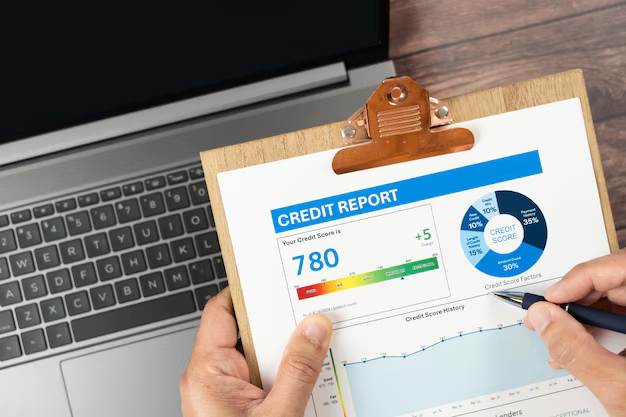Transforming Your Credit: A Comprehensive Guide to Repairing Bad Credit
Repairing bad credit might seem daunting, but it is entirely achievable with a clear understanding and a strategic approach. Whether you're aiming to improve your score for an upcoming loan, purchase, or simply a better financial future, knowing where to start is key. Let’s embark on a credit repair journey that will help you regain control of your financial life.
Understanding Credit Scores and Reports
What is a Credit Score?
Your credit score is a numerical representation of your creditworthiness, ranging typically from 300 to 850. The higher your score, the more attractive you are to lenders. Credit scores are determined by several factors, including payment history, amounts owed, length of credit history, new credit, and types of credit in use.
How to Obtain Your Credit Report
The first step towards repairing your credit is understanding your current situation. You are entitled to one free credit report per year from each of the three major credit bureaus—Equifax, Experian, and TransUnion. Reviewing your credit reports can help identify inaccuracies that could be pulling your score down.
Identifying Credit Report Errors
Common Credit Report Errors
Mistakes on credit reports are not uncommon. They can significantly affect your score if not corrected. Errors may include:
- Incorrect personal information
- Accounts that don’t belong to you
- Closed accounts reported as open
- Incorrect reporting of account balances or credit limits
How to Dispute Errors
Once errors are identified, disputing them promptly is crucial. Each bureau has a process for contesting inaccuracies, usually requiring written documentation. Provide detailed descriptions and any supporting evidence to bolster your case.
Strategies for Improving Your Credit Score
Payment History: The Critical Component
Timeliness in paying bills is crucial. Late payments can stay on your credit report for up to seven years and significantly impact your score. Setting reminders or enrolling in automatic payments can help ensure bills are paid on time.
Reducing Debt
High debt levels can adversely affect your credit score. Aim to reduce balances on credit cards and loans. The credit utilization ratio (the amount of credit you're using relative to your available credit) should be kept below 30%.
Diversifying Your Credit Mix
A mix of credit types, such as installment loans, credit cards, and retail accounts, can benefit your credit score. However, don't open new accounts unnecessarily, as excessive inquiries can hurt your score.
Avoiding New Debt
Consider closing newer accounts and refraining from opening multiple new credit accounts simultaneously. New accounts can lower your average account age and potentially impact your score.
Utilizing Credit Repair Services
What Are Credit Repair Services?
Credit repair services can help handle disputes on your behalf, but it's important to understand that they cannot do anything you can't do yourself. If you choose to use a credit repair service, research its credibility and associated costs.
DIY vs. Professional Help
Opting for DIY credit repair may save money and provide a better understanding of personal finances. However, those with complex credit struggles might find professional credit repair services beneficial. Evaluate your situation carefully before deciding.
Building Long-Term Credit Health
Establishing Financial Discipline
Adopting disciplined financial habits is essential for sustaining good credit in the long term. Best practices include setting up a budget, tracking spending, and planning for emergencies.
Setting Financial Goals
Set specific, achievable financial goals that motivate you to maintain improved credit. Whether it's buying a home, traveling, or saving for education, clear goals provide direction and purpose.
Monitoring Credit Regularly
Regularly checking your credit report can prevent surprises and ensure any changes are timely noticed. Staying informed about your credit status helps maintain control over the financial narrative.
Quick Reference Guide to Repairing Bad Credit
🔍 Check Your Credit Report:
- Obtain annual free reports.
- Look for inaccuracies.
🛠️ Dispute Errors:
- Gather evidence.
- Contact credit bureaus.
📅 Pay Bills on Time:
- Set reminders or automate payments.
- Avoid late payment penalties.
📉 Reduce Debt:
- Decrease credit card balances.
- Aim for a credit utilization rate below 30%.
🔀 Diversify Credit:
- Maintain a variety of credit accounts.
- Avoid unnecessary hard inquiries.
🤝 Consider Professional Help:
- Evaluate credit repair services.
- Weigh cost vs. DIY options.
🛡️ Build Long-Term Habits:
- Establish a budget and goals.
- Regular credit monitoring for maintenance.
Moving Forward with Confidence
Repairing bad credit is a journey, one that requires patience and diligence. By following these guidelines, you'll create a robust framework for credit health and financial empowerment. Remember, each step forward is progress and leads closer to achieving a credit status that opens doors to financial opportunities. Stay focused, and you'll find that better credit is within reach.

Related Topics
- A.i Credit Repair
- Are Credit Repair Companies Legit
- Are Credit Repair Companies Legitimate
- Are Credit Repair Companies Worth It
- Can You Repair a Credit Card Tha's Coming Apart
- Do Credit Repair Agencies Work
- Do Credit Repair Companies Work
- Do Credit Repair Services Really Work
- Do Credit Repair Services Work
- Do It Yourself Credit Repair